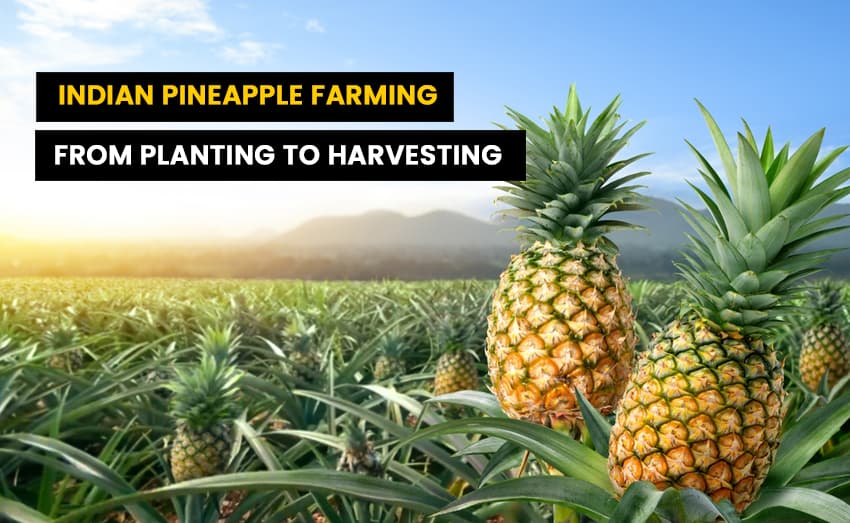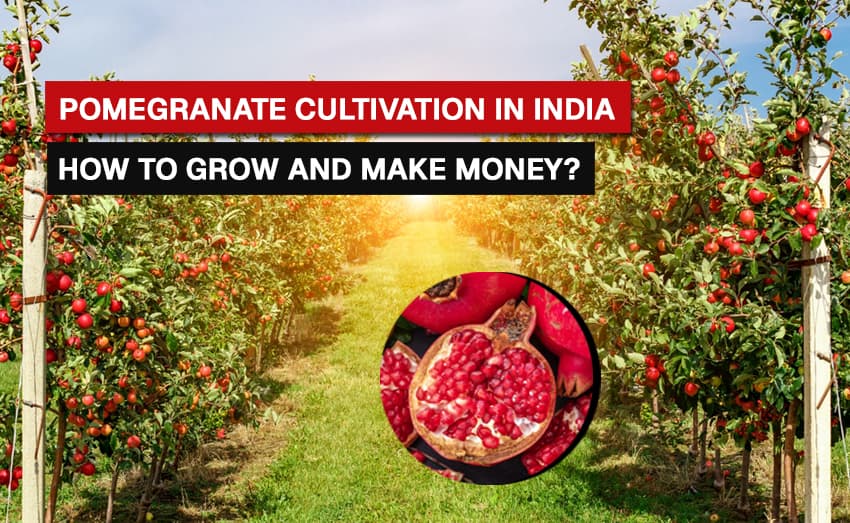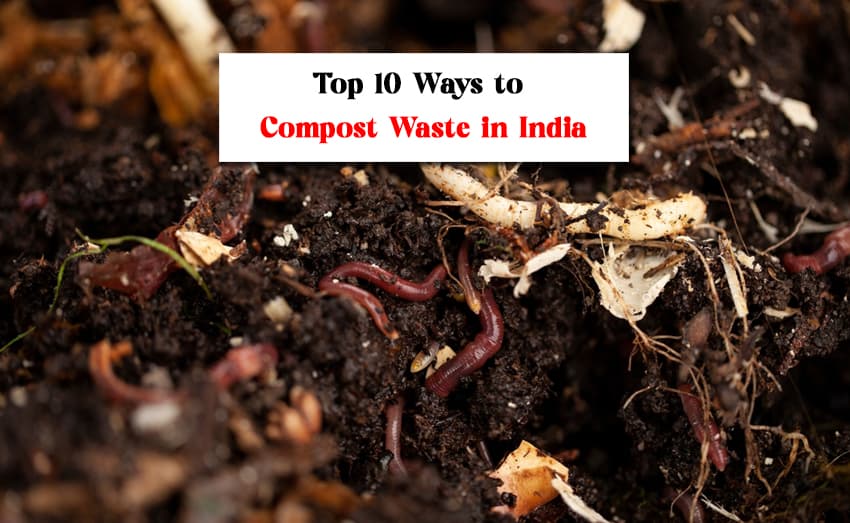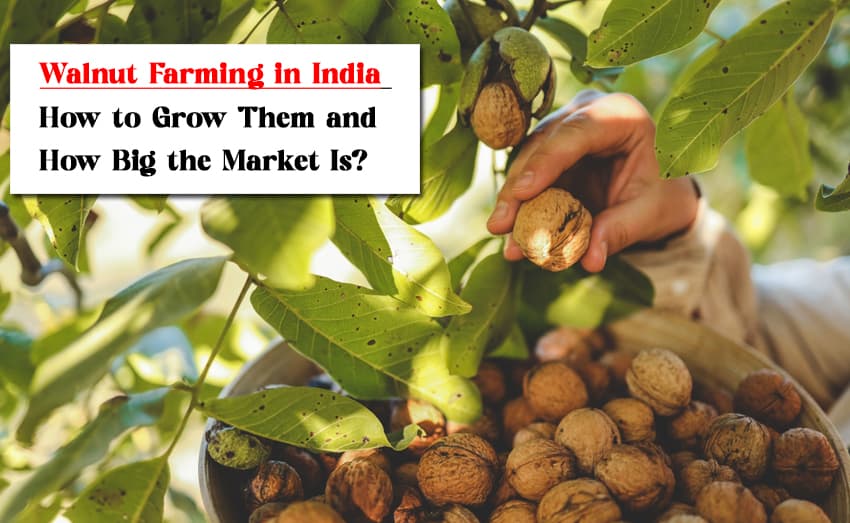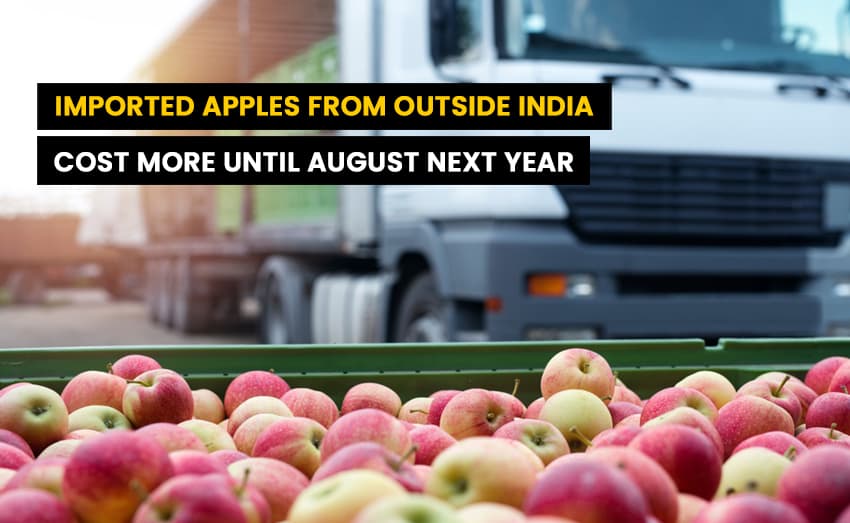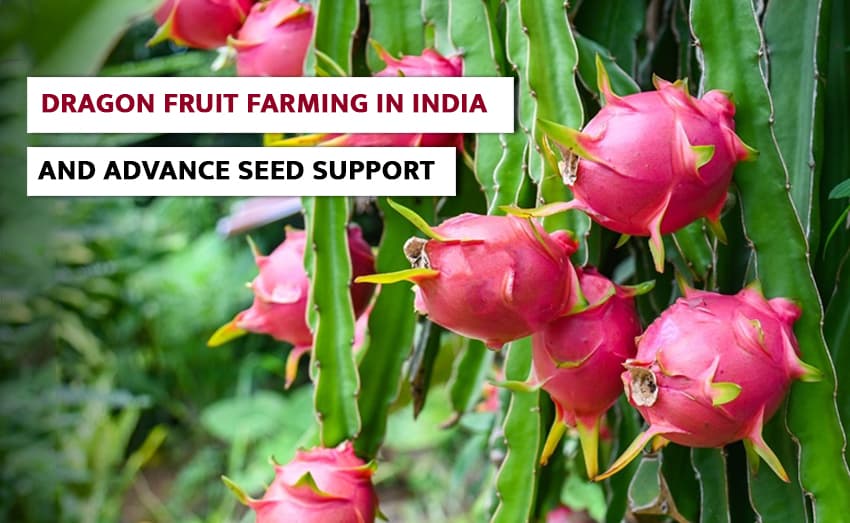Indian Pineapple Farming: From Planting to Picking
One of the most important tropical foods that people grow all over the world is the pineapple. Unfortunately, severe frost and drought are the only weather situations that pineapple farms can't grow well in. But the quality of the fruit is affected by changes in temperature in different areas. This blog talks about every part of growing pineapples in India.
A Brief History and Overview of Growing Pineapples
The pineapple plant is in the Bromeliaceae family and is formally named Ananas comosus. The outside of this fruit is rough and spiked, but the inside is bright and sweet. Pineapple was first grown in Brazil and then spread to other parts of the world over time. In 1548 AD, the Portuguese brought this sweet and sour fruit to India. Since then, pineapple has become one of India's market crops because it grows so quickly. At 1.2 million tonnes per year, our country is one of the top five pineapple growers in the world. Indonesia, Thailand, China, Brazil, the Philippines, the United States, Mexico, and other countries also grow a lot of pineapple.
What Pineapple Is Made Of Nutritionally
One of the most popular fruits in the world, mostly because of how good it tastes and how healthy it is. Minerals, vitamins, enzymes, and dietary fibre are just some of the healthy nutrients that pineapple is full of. It has a lot of calcium, magnesium, potassium, iron, and vitamins A, B, and C. Bromelain is an enzyme that is found in it that is known to help digestion and reduce inflammation. It doesn't have any cholesterol and has very little fat and salt. You can eat this sweet fruit raw or cooked.
Different kinds of pineapple in India
India grows a number of different kinds of pineapple. The pineapples that are grown in farms can be roughly put into three groups: Cayenne, Queen, and Spanish. In India, there are a lot of different kinds of pineapple.
Smooth Cayenne
It is also called cayenne, and Indians used to grow it a long time ago. It's the most common type used for cooking. The meat is firm, close-grained, and juicy. When it's ready, it turns pale yellow. Amount of acid is between 0.5 and 1%, and the TSS is between 12 and 16 Brix.
Kew
There is a lot of variation in this type of pineapple, but it still grows the best in India. This is mostly because it can be used to make jam. It weighs between 2 and 3 kg and is shaped like an oblong with a small curve towards the crown. This type can be used to make eyes that are wide and shallow. It has light yellow meat that is juicy and almost free of fibres. It is between 0.6 and 1.2% acidic and between 12 and 16 Brix TSS.
Queen
Countries like as Australia, India, and South Africa are the primary regions where this ancient variety is cultivated. In Australia, it's also called common rough. Its plant is quite small, cooler, and less likely to get diseases. Its fruit weighs between 1 and 1.5 kg and is ready to eat pretty quickly, but it doesn't produce much. The meat is not as juicy as cayenne's, but it is very crispy. It is acidic about 0.6 to 0.8% of the time, and its TSS is about 15 to 16 Brix.
Mauritius
This type of pineapple is grown in India and Ceylon and is one of the most important ones. It is mostly grown in India, in the states of Meghalaya and Kerala. Its meat is very sweet and has a thin core. It is mostly used for juice. It has medium-sized fruits with deep yellow and red skins. Between 1.36 kg and 2.25 kg. It has leaves that are dark green and have spiny edges all the way around. This kind of pineapple ripens in the middle of the season.
Jaldhup and Lakhat
These two types of pineapple are from India. They are named after the places where they are grown a lot. If you compare their fruits to Queen fruits, you can tell that they are both Queen varieties. There is a good mix of sweetness and acidity in Jaldhup. Its fruits taste boozy on their own, making them easy to tell apart from other Queen group fruits. Both of these types are grown mainly for eating and processing.
What the weather and soil need to be in India to grow pineapples
When it comes to dirt, pineapple can grow in a lot of different types, even poor soil. On the other hand, pineapples grown in light dirt are thought to be better. Also, sandy, loamy soils that are high in carbon are thought to be the best for growing pineapples. Because it doesn't like it when the soil gets too wet, the pineapple plant needs good drainage to keep the soil from getting too wet. The dirt should be 45 to 60 cm deep, not hard or packed with stones, and have a pH between 5.0 and 6.0.
If you want to grow pineapples, you need an environment that is warm and humid. Fruit trees that grow pineapples do best when the temperature is between 15°C and 32°C. A change in temperature of 4°C at night is good, because high temperatures at night can be bad. In addition, temperatures above 35°C are not good for its growth, especially when the humidity is low. It can burn even its seeds when they are in direct sunlight. As high as 1,100 m above sea level, pineapple plants can grow. This is especially true in places that don't get frost and get between 760 and 1,000 mm of rain a year on average.
The weather conditions allow it to flower from February to April and grow between September and December. In India, the best time to buy pineapples is from July to September.
Getting land ready for pineapple farming
It is important to make the field well-plowed and level. Depending on the type of land, ditches should be dug that are a good length, a width of about 90 cm, and a depth of 15 to 30 cm. The space between the two rows of plants should be 30 to 60 cm at most. About 12 to 15 months before the flowering season, which runs from December to March, is the best time to put a pineapple. But it's different in different places depending on the weather and the amount of rain. For example, in Kerala and Karnataka, the best time to plant is between April and June, while in other places it's between August and October. When it rains a lot, you shouldn't plant pineapple plants.
How to Plant Pineapples for Growing
Most of the time, vegetative planting material is used to make more pineapple trees. The most popular types of planting materials are conventional planting materials, which come from plants. For example, pineapple plantlets are mostly spread by suckers, slips, and crowns. Out of the three, suckers and slips are better than crowns because they flower before crowns do. The 350g slips of uniform size are used for planting, while the 90x60x30 cm suckers are put in trenches.
How Irrigation Works in Pineapple Farming
Most of the time, pineapples are grown in areas that get rain. Additional watering, on the other hand, helps grow big pineapples in places that get enough rain. The right amount of water is given to the plant to improve and keep its wetness level. If it doesn't rain much and it's hot, you need to water your plants every 20 to 25 days. The best way to water pineapple farms is with drip irrigation, which sends water directly to the base of each plant with very little waste. Irrigation also helps with planting in the off-season.
Taking care of fertiliser and nutrients in pineapple farming
As main nutrients, nitrogen (N), phosphorus (P), and potassium (K) are very important for pineapple because it is a shallow feeder. Besides that, it needs secondary and micronutrients like boron (B) and magnesium (Mg). It is thought that giving 12, 4, and 12 g of N, P2O5, and K2O to each plant every year is the best amount. When it rains during the rainy season, fertilisers should only be used when there is enough water. When pineapple trees were fertilised with K2SO4, the fruits they grew were bigger, had bigger crowns, and had more eyes per spiral. The amounts of TSS and ascorbic acid were much higher in pineapples that came from plants that were fertilised with KCl. So, to improve the yield and quality of the pineapple fruit, it is important to use the right fertilisers in the right amounts.
How to Keep Pineapple Plants Safe from Pests and Diseases
Pests, bacteria, viruses, and fungi are often to blame for pineapple diseases. They hurt the plant as it grows and the fruit before and after it is picked. It can get Phytophthora root rot, Pineapple mealybugs, green fruit rot, Base rot Fusariosis, and other illnesses. It is possible to get rid of all bugs using insecticides or natural enemies that keep them away. Also, farming techniques like crop rotation, mulching, and pulling weeds should be used every so often to stop the spread of diseases or bugs.
Harvesting and taking care of pineapple after harvesting
Pineapple plants flower 10 to 12 months after they are planted, and the fruits are ready to be picked 15 to 18 months after they were planted. But it varies on the type, the planting material, the time, and other factors. For canning, the fruits are usually picked when there is a small change at the base of the growing fruits. But pineapples that are meant to be eaten aren't picked until they turn a golden yellow colour. Also, the damage to fruits and leaves has gone down since machines started being used for gathering. The fruits are rated based on their colour, size, and weight after they are picked. As a way to slow down the ripening process, they are put in boxes made of bamboo strips and kept in places that are between 10 and 13°C cold. They can be kept for 10 to 20 days after being picked.
Summary
The processed pineapple business is growing quickly, so it's important to support the waste handling of these businesses. It can be used to make methane, phenolic chemicals, animal feed, and Bromelain. In India, growing pineapples doesn't follow a set method, and organic farming isn't given much attention either. Farmers should be encouraged to attend international symposiums and conferences about new farming methods that can be used and are good for the environment, as well as other changes in this area.

